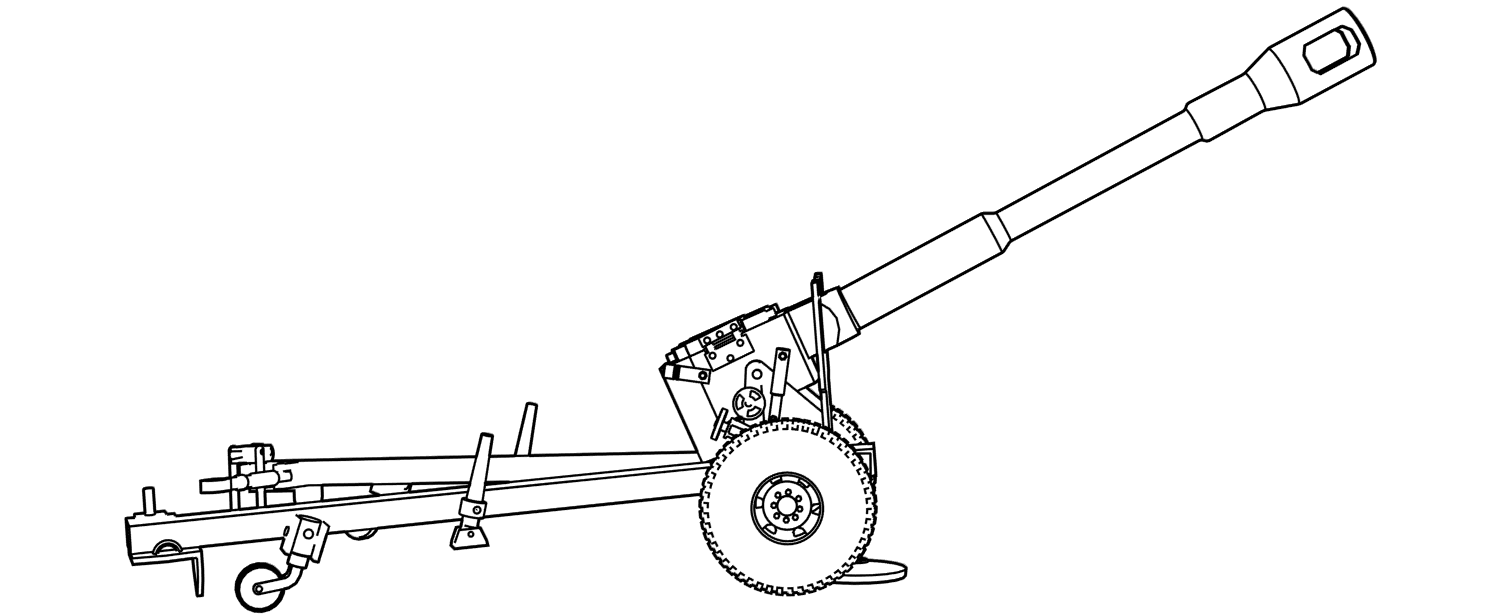Artillery Gun Projectiles
Artillery gun projectiles are gun-launched indirect-fire projectiles that are typically unguided. They can be generally described as a steel cylinder with a tapered pointed nose and possibly a tapered ‘boat tail’ at the base. The nose of the munition is often fitted with a fuze, typically bringing the munition to a conical point.
Artillery projectiles most often feature a thick-walled body and a driving band
 A soft metal band around a projectile, usually located near its base
which engages with a barrel’s rifling
A soft metal band around a projectile, usually located near its base
which engages with a barrel’s rifling
 A pattern of grooves in the bore of a barrel used to impart spin on a projectile. Common in artillery guns
. Generally, thick-walled fragments account for most of the post-explosion remnants of a high explosive artillery gun projectile which functions as intended.
A pattern of grooves in the bore of a barrel used to impart spin on a projectile. Common in artillery guns
. Generally, thick-walled fragments account for most of the post-explosion remnants of a high explosive artillery gun projectile which functions as intended.
Such projectiles are fired from artillery guns
 Heavy, indirect-fire weapons used to fire artillery projectiles
. These are generally heavy indirect-fire weapons that are loaded from the breech and feature a rifled barrel. An artillery gun projectile is fired by opening the gun’s breech, loading the projectile (and, in some cases, a separate cartridge case, propellant charge, and/or primer), closing the breech, and firing a mechanism which strikes the primer. Once the primer is struck, it ignites the propellant charge, which accelerates the projectile through the barrel. Rifling in the barrel imparts spin to the projectile, ensuring it flies point-first toward the target with relative accuracy. In flight, unguided artillery projectiles follow a ballistic trajectory
Heavy, indirect-fire weapons used to fire artillery projectiles
. These are generally heavy indirect-fire weapons that are loaded from the breech and feature a rifled barrel. An artillery gun projectile is fired by opening the gun’s breech, loading the projectile (and, in some cases, a separate cartridge case, propellant charge, and/or primer), closing the breech, and firing a mechanism which strikes the primer. Once the primer is struck, it ignites the propellant charge, which accelerates the projectile through the barrel. Rifling in the barrel imparts spin to the projectile, ensuring it flies point-first toward the target with relative accuracy. In flight, unguided artillery projectiles follow a ballistic trajectory
 The motion of unpowered, unguided munitions that move along a curved path under the action of only gravity and air resistance
.
The motion of unpowered, unguided munitions that move along a curved path under the action of only gravity and air resistance
.
Artillery guns are used to provide fire support to armour and infantry and most often offer a medium-range option for artillery weapons, between mortars and rocket artillery. They are often used in salvo fire, with multiple weapons firing simultaneously.
Artillery gun projectiles have a typical range of between 30 and 40 kilometres, making them a medium-range munition.
Guided artillery projectile
An artillery projectile that uses some form of precision guidance to correct its trajectory during flight, increasing its accuracy and precision.
Unguided artillery projectile
An artillery gun projectile which cannot alter its trajectory during flight.